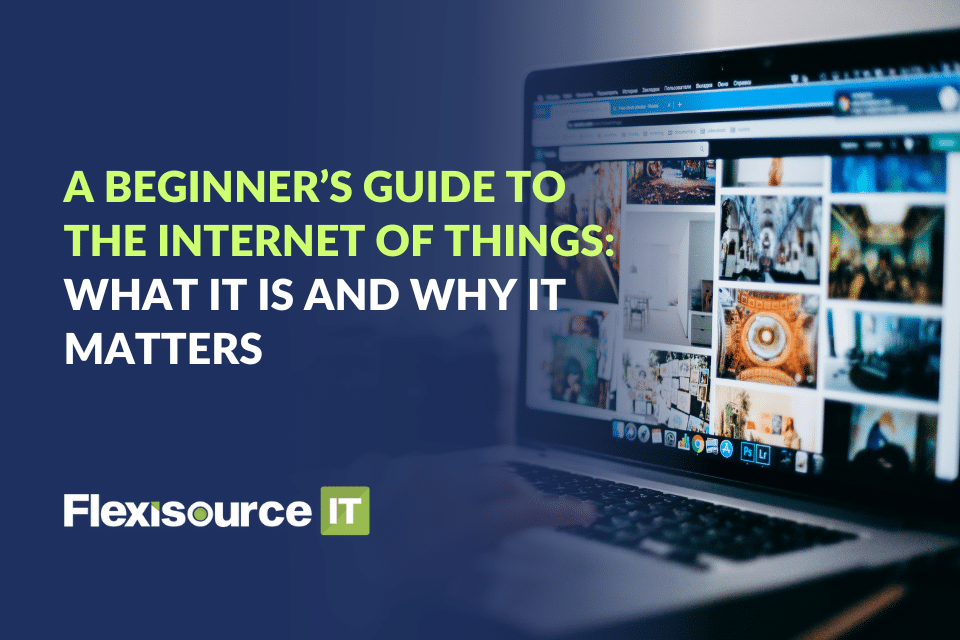The Internet of Things is a term used for objects that can have software, sensors, and most importantly, connectivity to the Internet. Almost everything has connectivity to the Internet these days and if you’re thinking of an object right now connected to the Internet, that’s likely an IoT.
Cars, refrigerators, phones, TVs, and printers are just some examples of IoT used on a daily basis. Since technology advances at an extraordinary rate in the modern age, it’s become a necessity to stay connected globally no matter what appliance you’re utilising.
But what does that have anything to do with business? Well, globally IoT has become a powerhouse for collecting data and understanding consumer interest. Since IoT simplifies whatever process a person needs to do to acquire what they need, it has become an attractive product in a world that is fast-paced and requires optimised progress.
Take for example using the Internet to connect your phone to your printer. That’s a convenient and portable way of printing out anything you need without having to connect with wires what not. Even you would find it interesting enough to purchase.
So how do we take advantage of IoT? This guide will tell you everything you need to know to utilise the Internet of Things to its full potential for your business growth.
What Makes the Internet of Things?
To put it simply, IoT is made up of smart technology. That means anything like smart homes or smart devices like watches. What separates IoTs from other devices is the key components that make them up.
All IoTs possess a form of connectivity, data processing, sensors, and user interface. Take for example your Apple watch which has a screen that is smooth to navigate, processes your commands to send texts using your phone, and is connected to your phone and the Internet itself. In terms of sensory, these smart techs notify us of any updates required.
Taking it up a level are smart locks and smart cars when it comes to sensory. These IoTs can even alert you of intruders or stop their movement through blocked paths.
How Do IoT Work?
The Internet of Things works in mysterious ways for someone who has no background in programming. For the average user, it simply exists. However, to fully utilise it for your own business, it’s best to know how IoT works.
IoTs work by connecting to the Internet and other IoTs. To connect they require AI and cloud computing to utilise the data flow in the IoT’s system. There are three key steps for your device to function as an IoT and implement your commands. These steps are what developers follow this flow to implement an IoT’s function:
Collect Data
The first step is to utilise the IoT device to collect data. There are many types of IoT parts that collect the data such as antennas, sensors, or microcontrollers.
Receive Data and Transfer
The second step is for the IoT gateway hub to receive the data collected by the device and streamline it through to the final step.
Analyse Data and Implement
Finally, the data collected will be analysed to take action by the IoT device. Those that analyse and take action in an IoT device are usually user interfaces or back-end systems. For businesses, this could also refer to management tools or customer relationships.
Benefits of IoT
Now that we know how the Internet of Things works, it’s time to learn about the advantages of using it. There are many uses for IoT. Especially since most of the technology trends require the use of smart devices. However, we decided to compile them into four main types of IoT benefits.
Convenience
Convenience is a key part of why many users utilise the Internet of Things. Just by clicking a specific button or implementing a command without any issues, you can receive what you want without much effort.
Take for example voice commands and biometric locks. You no longer need to type in specific things to get what you want from your device. All you have to do is make a particular gesture.
Efficiency
The next benefit is all about its efficiency. Today life is all about fast and accurate decisions to keep up with everything everyone needs to do. Time is short and a single mishap can reshape the entire schedule for both businesses and personal lives.
Thanks to the Internet of Things efficiency has doubled. From manufacturing to healthcare and even agriculture, smart devices assist the way of life of every human. No longer do businesses have repeated delays nor do users have to personally print and deliver documents to their healthcare facilities.
This type of efficiency improves the comfort of life without having to deal with unnecessary complications. For businesses, it improves the delivery of comfort and convenience to their consumers.
Enhanced Decision-Making
An enhanced form of decision-making is one of the two main benefits when utilising IoTs for business. Notifications of any errors or bugs and fixing them with simple commands are the highlights of IoTs.
However, receiving all the analysed data collected by the IoT can give business analysts a peek through the next important decisions to make on the fate of the business.
Cost-savings
Last but not least are cost-savings. Smart devices can predict when maintenance is required. This prevents sudden bugs and errors that developers may have overlooked. Additionally, the downtime is reduced when utilising IoT devices.
Challenges and Concerns
While the benefits of utilising the Internet of Things are clear, there are also challenges that users and developers face when implementing them. Below are three major IoT challenges you will likely come across.
Security Risks
The most obvious concern stems from the lack of security. The number of cyberattacks on IOT continuously increases with each year, causing issues with its privacy and security. How confident can anyone be if their connectivity is breached?
Connectivity Issues
Another challenge IoT users face is its ability to connect. Implementation on its own designated devices may not be an issue, but the complex requirements to integrate it with a variety of devices require different protocols.
As a result, many IoT devices that users want to connect to other IoT devices may not operate as seamlessly.
Overconsumption of Storage and Funding
Behind the scenes, the biggest issue with the Internet of Things is the overconsumption of power for it to take action. Not only does it require users to buy costly installation requirements, but it also takes up an absurd amount of storage.
Why IoT Matters
The future of tech cannot advance further without IoT regardless of its advantages and disadvantages. Its ability to support a diverse range of human-related environments makes it an irreplaceable tool that can spearhead comfort and optimisation in transportation, healthcare, and work environments.
Conclusion
Now you’re a master at the basics regarding the Internet of Things. This revolutionary subcategory of technology will likely see more advances shortly. Now that globalization has taken the world by storm, it’s time to take a step further so that your business can keep up with the times.







